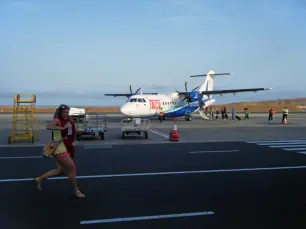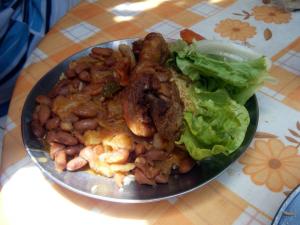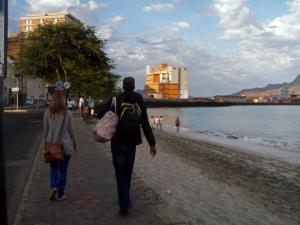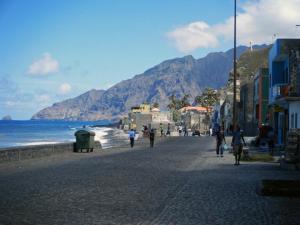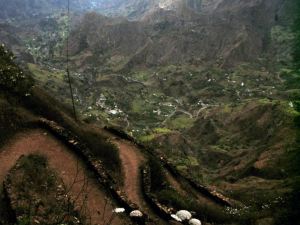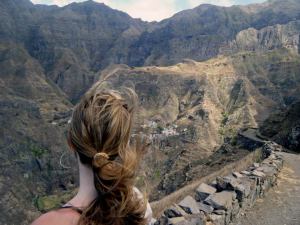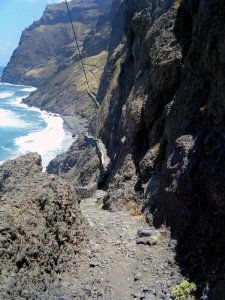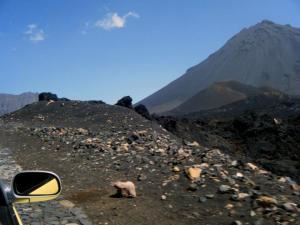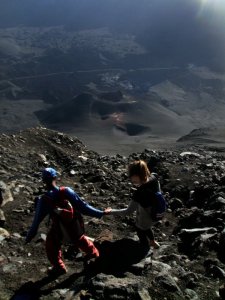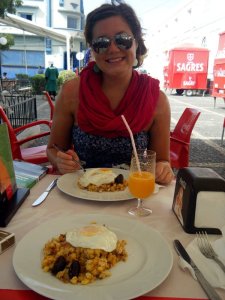The job search of a young, still-not-sure-exactly-what-I-want-to-do twenty something can lead to many interesting places. Over the course of my RPCV (Returned Peace Corps Volunteer) career search, I’ve come across a number of interesting news wires, about 26 different careers I could maybe pursue, and quite a few remarkable people. One of those people was Melissa Lamson, the founder and president of Lamson Consulting, LLC. Melissa is an award-winning global cross cultural consultant, specializing in cultural transformation. She has worked with everyone from Cisco to MTV to the embassy of South Africa (to name a few).
When I came across Melissa’s site, my first thought was “This is a career?! Awesome.” The second, after about an hour of research and devouring Melissa’s website, was “How do I become her?” I researched more and became a bit disheartened at my finding another career path to obsess over that seemed to be one of the smaller niche enterprises (read: difficult to break into). Discouraged, I emailed Melissa asking for more information on her background, her career path, and any organizations she admired. Amazingly, she wrote me back and a week later we chatted on the phone for about 45 minutes.
Our conversation left me smiling – this was really a career I could see myself in, and with Melissa’s guidance, I now had a solid place to start. To make things better, at the end of the phone call, she asked me to write a post for her blog “The Globalist Blog” on my experience working with Stomp Out Malaria this past year. After a week of many drafts, below is the final result. Enjoy!
Lessons on International Project Management in Developing Countries
Or, How to be an Effective Program Coordinator for 17 Countries, 3 International Organizations, 60 Field Representatives, and 3,000 Volunteers Across Sub-Saharan Africa
When I accepted a position as the Communications Manager & Field Representative Coordinator for Peace Corps’ Stomping Out Malaria in Africa initiative, I really had no idea what I was getting into. It was one of those jobs where my boss gave me a two-line position summary, a 50-page initiative project plan, and a week to write up a job description complete with a timeline and indicators of success.
Looking back, that vague of a start seems sparse given the magnitude of our initiative, but it also illustrates how projects tend to operate in low-resource / high-demand environments. If your organization wants to do well, flexibility and patience are the name of the game when growing your program and coordinating your employees.
My inaugural year operated on a steep learning curve strewn with missteps, but by the end of that time, I developed a foundation of principles to follow when coordinating such an initiative. Below are 3 things that will help set your global program off on the right foot, especially when working in low and lower-middle income countries (or, LMICs):
1) Prepare for failure, train for resilience. The training that our field representatives (or employees for the purpose of this article) received was arguably the most thorough of any program in Peace Corps at the time. We flew them into Dakar for an intensive 10-day training led by top professionals in international malaria prevention; we covered everything from malaria science to behavior change to program management; we gave them endless online resources and access to experts in the field and back in the states. What we didn’t do (with our first training groups at least) was talk about what could go wrong and how to deal with it. Instead, our employees left ready to dive into their work and surge forward the moment they touched down at their posts. For some, this approach generated good results, but for those who were met with continuous roadblocks, the frustration was enormously de-motivating after such a fervent build-up at training.
Though discussing aspects of projects that could go wrong can be intimidating, it is essential to the durability of any program. Indeed, if someone had not told me to “plan for projects to not go as planned” in the beginning of my time as a field volunteer in Senegal, I would have assumed that I had done something abnormally wrong to have failed. But failure is often imperative: it often reveals needed changes to our programs that we would have otherwise missed.
There was a noticeable change in our employees’ resiliency once we talked about failure. Their attitudes during troubleshooting conversations went from disheartened to resolute, knowing now that their projects not going smoothly was evidence of a learning and iteration process over nonsuccess. This attitude was crucial when it came to our organization meeting its goals – undoubtedly teams that are irrepressible in their drive to overcome setbacks can propel a project towards its desired outcomes at an extraordinary rate.
2) Cultivate a team, even if you have to don virtual pom-poms. International programs do not lend themselves to a tight-knit “office culture.” Employees often work alone, at posts that are separated not only by international borders but also logistical obstacles such as infrequent power, dial-up internet, and unreliable transportation. If open and continuous communication is the backbone of an effective team, this was not an environment poised for success.
Having our employees consistently talk to each other about what they were doing and how things were going seemed like an easy part of their job to me, but my employees soon taught me otherwise. I realized that if I was going to get my team to exchange information, it was going to take daily coaching before it became a habit.
My strategy for cultivating this routine was through daily Google chat check-ins and monthly phone calls. During these conversations, I encouraged our employees to share their ups and downs: if people told me about things that were going well, I asked them to proclaim it on our private Facebook group; if I was approached with a problem, I’d connect that employee with one in a different post that was dealing or had dealt with the same issue; if someone had developed a great project, I asked him or her to upload and share the plans though our Google docs folder.
The pom-poms came out when I would emphasize employees’ efforts in order to build momentum towards a group conversation. For example: “Hey look at this great project Team Ethiopia is doing – I bet a few of you could adapt this for your own initiatives,” and so on. At times I felt silly with my relentless “sunshine” cheerleading, but eventually the group began uploading their project reports and discussing frustrations on their own. Result: a cohesive global team that sustained their digital communication connection even after I had left the initiative.
3) You are a guest, so build some clout before you think you can implement something new. After arriving at their posts, some of my employees were constantly frustrated when their fellow Peace Corps Volunteers wouldn’t take heed of their calls to action. This was especially true for those implementing our program in countries that had never focused on our goal of . malaria eradication before. It didn’t matter that my employees were also Peace Corps Volunteers – what mattered is that they were coming in trying to start something new without the group-bonding experience of all growing through training and learning together, and so the local crew was not having any of it.
And really, why should the established local volunteers do as my newly installed employees said? My team may have been experts in their field, but the local volunteers were experts in their context. Sure, there is the old-school tactic of having their managers ordering them to do as we said, but in terms of sustaining the change we were brought in to initiate, that plan did not have much longevity (nor does it encourage a happy group culture, obviously).
This is especially true in when working in LMICs. This may seem obvious, but when you are starting a project in a new country – even if it’s through the same company you worked for elsewhere on the globe – you are still entering the work culture of a different context entirely, and that makes you a guest, so behave accordingly. Western styles of business will not bode well in, for example, many West African countries: if you were to walk into a boardroom and jump directly into your meeting (as one might do in the U.S. so as not to waste anyone’s time), the local crew would definitely consider you rude for not greeting them and engaging in small talk to get to know each other before you began the meeting.
Obviously, the principle here goes beyond small talk: if you, as a guest in a country, want to ensure the work you are there to do lasts, and that the local crews can eventually take ownership of your projects, you need to first do the work and take the time to learn about who they are and how they live. This means spending your first few days (or week) of business really getting to know people, learning how their office and programs function, and gaining some operational local language skills. After that, you will enter your project not as a naive outsider who acts as he or she knows better than the local workforce, but as a partner who is looking to build something in collaboration with the established crew. This approach gives local teams the opportunity to take ownership, which means employees will not only care more about project outcomes, but will also organically improve the project due to their contextual knowledge and skillset.
Successfully managing projects that operate internationally requires a nuanced yet rigorous approach. It is important to keep the adage in mind that good intentions are not enough – organizations must be relentlessly critical of their own work and constantly adapting in order to achieve the greatest possible outcome for all parties involved.
These are principles that worked for me, but as each country and culture is different, so will be the avenue organizations need to take in order to get their job done. If these ideas do not work for your project, then let me then suggest empathy. As our initiative was trying to figure out the best way to function, what led me to the above foundation was constantly putting myself in the shoes of my employees, my managing team, and those we worked for. Coordinating international projects means coordinating a wide spectrum of people, and when you can align their needs with the goals of your company’s, you will not only realize your goals, but also enable those results to last.
